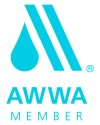 It is the cardinal rule, the first commandment of marketing: know your prospect. But in the water and wastewater industry, who exactly are the decision makers? Who is your prospect?
It is the cardinal rule, the first commandment of marketing: know your prospect. But in the water and wastewater industry, who exactly are the decision makers? Who is your prospect?
Most marketing materials are written for the consulting engineer.
But is that the only one you need to consider? And are the interests of the consulting engineer always the same as those of the end user? Who else might need to be considered in marketing materials, and what are their concerns?
The water and wastewater marketing funnel is unusually complex
I will discuss the process in the US, as it is the one I know best, but I hope the discussion will prompt you to think about the funnel in your prime markets.
Most projects start with a need at a utility, and the hiring of the consulting engineer. So yes, the consultant is pivotal in your marketing efforts. But are they the only consideration?
Others you may need to persuade include the business manager at the utility, the operations manager, and the utility’s engineering staff if they have one, to name a few. Of course the consultant should be considering their needs and perspectives, but having the right marketing materials to address their concerns can go a long way towards helping the consultant make the case and defend their selection of YOUR equipment or technology.
But it doesn’t stop there. Many projects have to go through at least one layer of regulatory oversight by a government agency. This is particularly true if there is any public funding involved. How to you ensure that your technology makes it through the regulatory process – what regulatory concerns need to be addressed?
And perhaps last but not least, the construction contractor. In Design-Bid-Build projects, the contactor is the actually the purchaser, and even after everyone else is on board, they can prefer an “or equal” and scuttle the purchase of your equipment. So their needs also need to be considered. Likewise, Design-Build and CM at Risk project delivery methods have their own challenges to be sure that YOUR equipment or service is actually selected for final purchase.
So again, who is your prospect?
With all these “decision makers”, how do you make sure you address the concerns of everyone? While there is certainly overlap, the priorities of each are a bit different, each has slightly different goals, and “pain points”. Addressing these nuances can be the difference between making a sale, and being just one of many options considered.
Once you identify your prospect, or really ALL your prospects, knowing the priorities of each will allow you to precision tune your message to address their priorities and increase sales.
Check back in
In upcoming posts, we will explore each of these prospect types, the subsets within each, and what to consider in crafting your message for each.



Leave a Comment